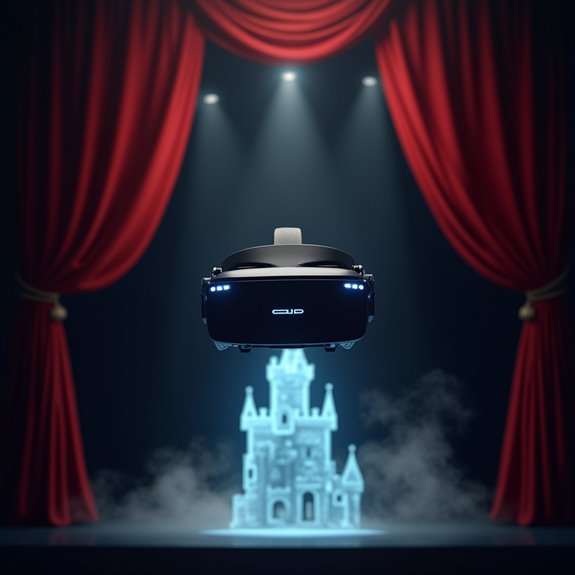Virtual reality is transforming theater into an exciting new frontier where audiences can step right into the action. Instead of watching from fixed seats, viewers now explore virtual stages, choosing their own perspective and interacting with performances in ways never before possible. This revolutionary technology makes world-class theater accessible to everyone, regardless of location or physical limitations. From Shakespeare to experimental works, VR opens up a whole new dimension of theatrical possibilities.

While theater has captivated audiences for centuries with its live performances and dramatic flair, virtual reality is now stealing the spotlight as a game-changing force in the performing arts. This cutting-edge technology isn't just adding a fancy tech twist to shows – it's completely transforming how we experience storytelling on stage, making theater more accessible and engaging than ever before.
Imagine watching a Shakespeare play where you're not just a passive observer but actually standing in the midst of the action. That's what VR theater offers, creating digital environments that were previously impossible and letting audiences control their own adventure. Productions like Hamlet 360 showcase this revolutionary approach. It's like having a front-row seat to the most spectacular show, except you can explore every nook and cranny of the virtual stage.
The beauty of VR theater lies in its ability to break down barriers. People who might never have had the chance to attend live performances due to physical limitations, financial constraints, or geographical distance can now experience the magic of theater from anywhere. It's democratizing the performing arts, making sure everyone gets an invitation to the show. The Royal Shakespeare Company is leading this revolution by streaming live performances to mobile phones, XR headsets, and schools across the country. Similar to sports training applications, theater performers can now use data-driven insights to analyze and improve their performances in virtual environments.
Theaters aren't going at it alone, though. They're teaming up with tech companies to push the boundaries of what's possible, creating experiences that blend traditional storytelling with cutting-edge technology. The UK's "Audience of the Future Challenge" and projects like the National Theatre's "alt.barbican" are perfect examples of how this collaboration is shaping the future of performance art.
But don't worry – VR isn't trying to replace traditional theater. Instead, it's adding another dimension to the performing arts, attracting new audiences and inspiring creators to think outside the box.
With the immersive entertainment industry valued at over $60 billion in 2019, it's clear that this isn't just a passing trend. As VR technology continues to advance and become more accessible, we're likely to see even more innovative ways of bringing stories to life, making theater more inclusive, engaging, and exciting than ever before.
Frequently Asked Questions
How Much Does VR Theater Equipment Typically Cost for Home Viewing?
Basic VR theater equipment for home viewing typically costs between $1,300-4,000, including a VR headset ($299-999) and a compatible gaming PC ($1,000-3,000), plus software expenses.
Can People With Motion Sickness or Vertigo Enjoy VR Theater Performances?
People with motion sickness can enjoy VR theater through gradual adaptation, comfort settings, and shorter viewing sessions. High-quality hardware, smooth content selection, and regular breaks help minimize discomfort.
What Internet Speed Is Required for Streaming VR Theater Productions?
Quality VR theater streaming requires minimum speeds of 50 Mbps, while ideal experiences need 100+ Mbps. Wired connections and symmetrical upload/download speeds guarantee smooth performance without buffering issues.
Are VR Theater Performances Available for All Age Groups?
VR theater performances have age restrictions. While accessible to most adults and teenagers over 13, they're not recommended for young children due to health concerns. Seniors can participate with proper guidance.
How Do Actors Prepare Differently for VR Theater Compared to Traditional Stage?
Actors must adapt to virtual environments through specialized training, learning spatial awareness without physical sets, collaborating with technical teams, and mastering emotional authenticity while interacting with digital elements.



Leave a Reply